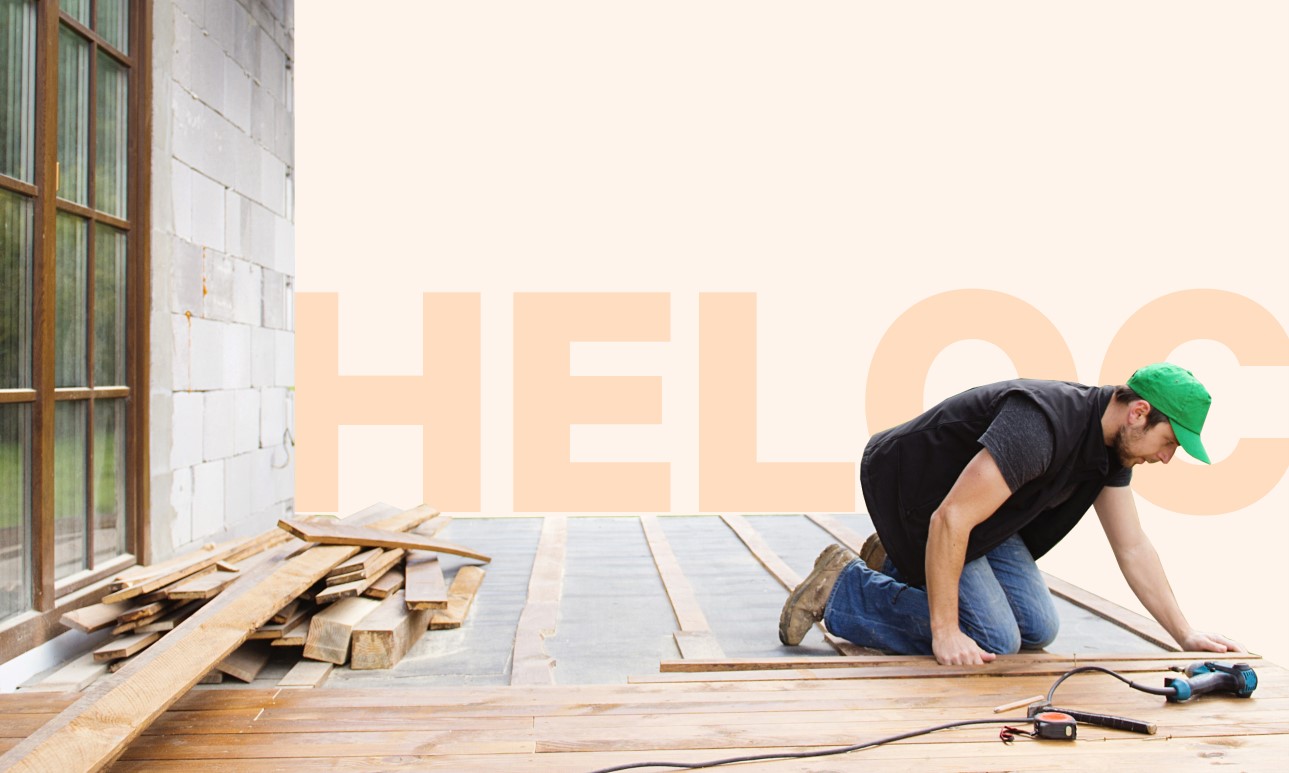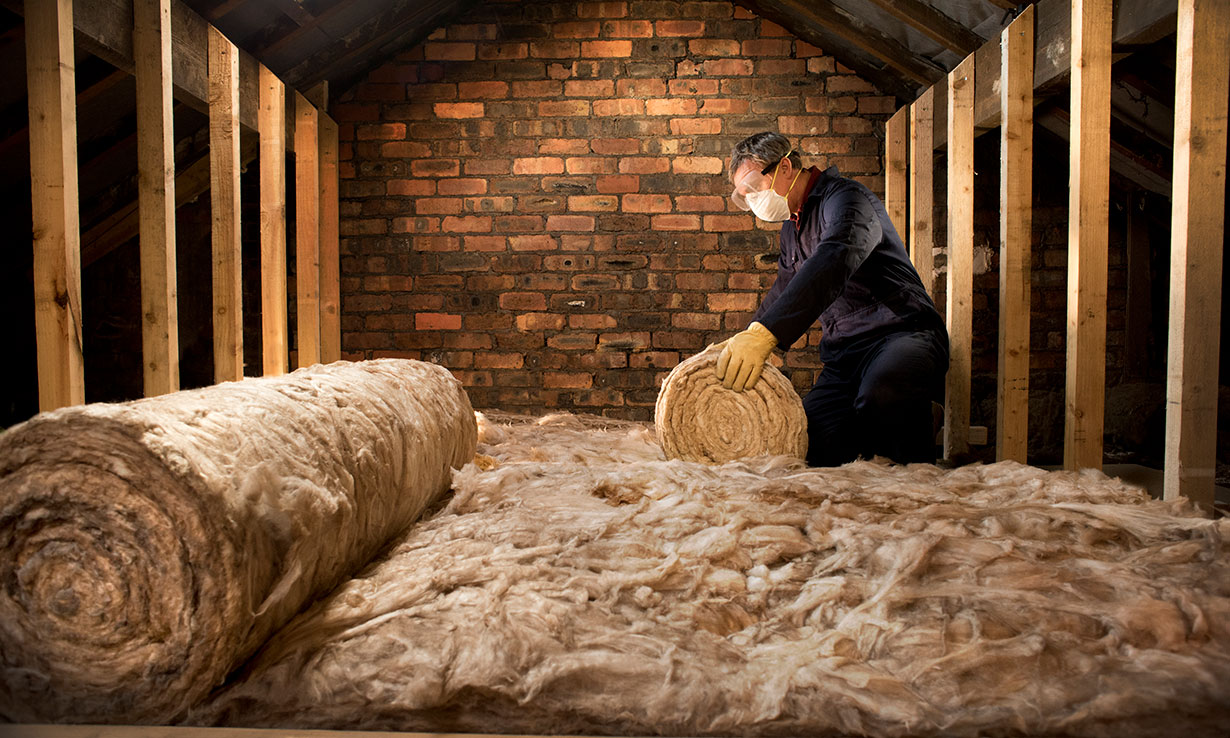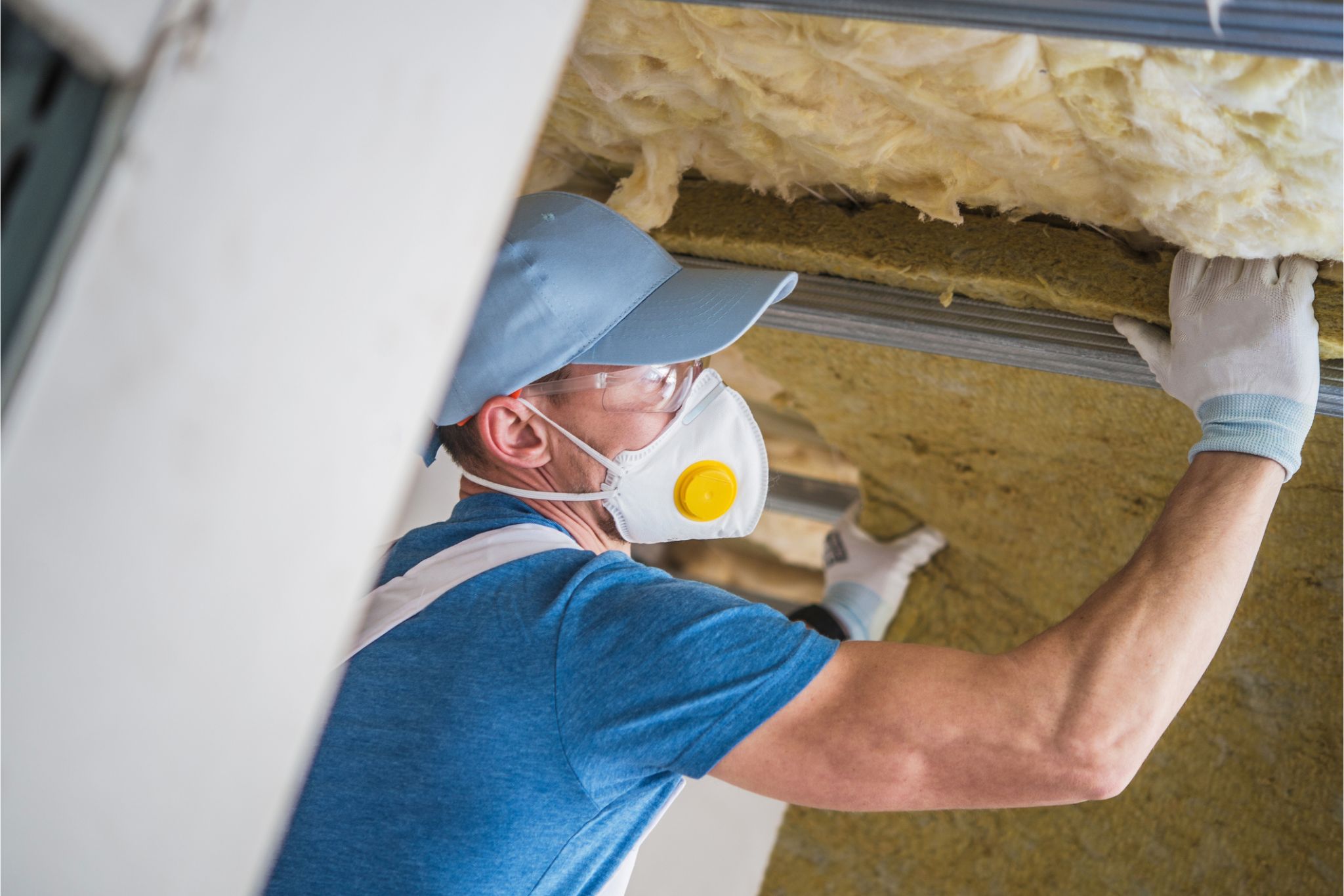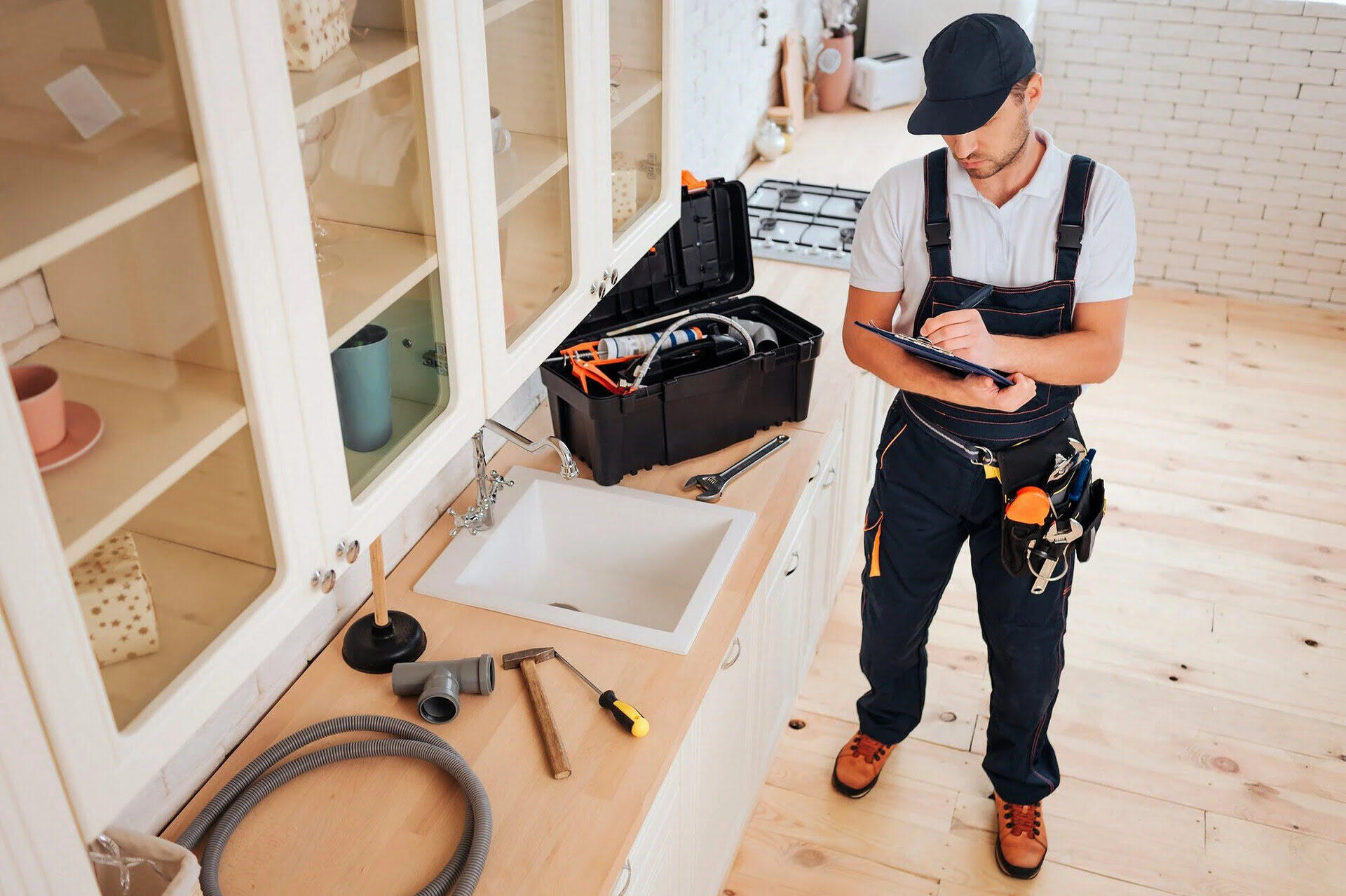Home>Renovation & DIY>Home Renovation Guides>How To Qualify Customer For Home Improvements


Home Renovation Guides
How To Qualify Customer For Home Improvements
Modified: January 4, 2024
Learn how to qualify customers for home renovations with our comprehensive guides. Get expert tips and advice on the qualification process. Ideal for contractors and homeowners.
(Many of the links in this article redirect to a specific reviewed product. Your purchase of these products through affiliate links helps to generate commission for Storables.com, at no extra cost. Learn more)
Introduction
Embarking on a home improvement project is an exciting endeavor for homeowners. Whether it's renovating a kitchen, adding a new room, or enhancing the outdoor space, the decision to invest in home improvements is often driven by a desire for enhanced comfort, functionality, and aesthetic appeal. As a home renovation specialist, it is crucial to understand the customer's needs, preferences, and constraints before delving into the project. This comprehensive guide will delve into the intricacies of qualifying customers for home improvements, ensuring that their aspirations align with realistic possibilities. Understanding the customer's needs, assessing their budget, and evaluating their home are pivotal steps in this process. By navigating through these stages with finesse, you can present tailored home improvement options that resonate with the customer's vision and financial parameters. Let's embark on this journey of guiding homeowners towards their dream home improvements while fostering a collaborative and fulfilling experience.
Key Takeaways:
- Understand the homeowner’s needs, budget, and home to offer personalized home improvement options that align with their vision and financial constraints. It’s about creating a collaborative and fulfilling experience for homeowners.
- By empathetically listening to the homeowner, providing transparent budget insights, and evaluating the home, you can present tailored home improvement options that resonate with the customer’s aspirations and financial parameters. This process fosters trust and confidence in your expertise.
Read more: How To Qualify For Home Improvement Loan
Understanding the Customer’s Needs
Every homeowner embarking on a home improvement journey has a unique set of needs and desires. Understanding these individual aspirations is fundamental to qualifying customers for home improvements. It begins with active listening and empathetic communication. By engaging in meaningful conversations, you can uncover the homeowner’s motivations, preferences, and pain points. This could involve understanding their lifestyle, family dynamics, and long-term vision for their home.
Moreover, delving into the specific areas of the home that the customer wishes to improve is crucial. Whether it’s a desire for a modernized kitchen, an expanded living space, or a revamped outdoor area, each aspiration requires careful consideration. By asking open-ended questions and encouraging the homeowner to articulate their ideas, you can gain valuable insights into their expectations.
Furthermore, it’s essential to explore the homeowner’s aesthetic preferences and functional requirements. Some may prioritize a contemporary and minimalist design, while others may lean towards a more traditional and cozy ambiance. Understanding these nuances allows you to tailor the home improvement options to align with the customer’s unique style and practical needs.
Additionally, considering any specific challenges or pain points the homeowner currently faces with their home is crucial. Whether it’s inadequate storage, limited natural light, or outdated fixtures, addressing these concerns can significantly impact the direction of the home improvement project. By empathizing with the customer’s frustrations and demonstrating a genuine interest in alleviating these issues, you can build a rapport based on trust and understanding.
Ultimately, comprehensively understanding the customer’s needs involves delving beyond the surface-level desires and unraveling the underlying motivations and practical considerations. By doing so, you can tailor the home improvement journey to resonate with the homeowner’s aspirations, creating a personalized and meaningful experience.
Assessing the Customer’s Budget
Understanding the financial parameters of a home improvement project is a critical aspect of qualifying customers for renovations. It involves delicately navigating the intersection between the homeowner’s aspirations and their budgetary constraints. By approaching this process with transparency, empathy, and expertise, you can ensure that the proposed home improvements align with the customer’s financial reality.
Initiating the discussion about budget requires a tactful approach. It’s essential to create an open and non-judgmental environment where the homeowner feels comfortable expressing their budgetary considerations. By fostering an atmosphere of trust and transparency, you can encourage the customer to articulate their financial boundaries without hesitation.
Once the budgetary parameters are established, it’s crucial to provide realistic insights into the potential costs associated with the desired home improvements. This involves breaking down the expenses, including materials, labor, permits, and any unforeseen contingencies. By offering a transparent overview of the financial implications, you empower the homeowner to make informed decisions aligned with their budget.
Moreover, exploring the various financing options available to the homeowner can further solidify the feasibility of the home improvement project. Whether it’s through traditional bank loans, home equity lines of credit, or specialized renovation financing programs, providing guidance on these avenues demonstrates a commitment to finding viable solutions within the customer’s financial framework.
Additionally, offering value-engineering suggestions can be instrumental in aligning the proposed home improvements with the customer’s budget. This involves exploring alternative materials, design modifications, or phased implementation strategies that optimize the project’s cost-efficiency without compromising quality or aesthetic appeal.
By adeptly assessing the customer’s budget, you can navigate the delicate balance between their aspirations and financial constraints. This process not only ensures a realistic and sustainable approach to home improvements but also fosters a sense of trust and confidence in your expertise and commitment to the homeowner’s best interests.
Before starting a home improvement project, assess the customer’s needs, budget, and timeline. Ask questions to understand their goals and preferences. This will help you tailor your recommendations and provide a better customer experience.
Evaluating the Customer’s Home
Before embarking on a home improvement project, a comprehensive evaluation of the customer’s home is essential. This step involves conducting a thorough assessment of the property’s current condition, structural integrity, and potential for renovations. By meticulously evaluating the customer’s home, you can gain invaluable insights that inform the feasibility and scope of the proposed improvements.
Commencing the evaluation process begins with a detailed walkthrough of the customer’s home. This allows you to observe the existing layout, architectural features, and any structural considerations that may impact the proposed renovations. By attentively examining the property, you can identify both the strengths and limitations that will influence the trajectory of the home improvement project.
Furthermore, assessing the home’s infrastructure, including electrical, plumbing, and HVAC systems, is crucial in understanding the foundational elements that may require attention during the renovation process. Identifying any potential upgrades or repairs in these essential systems is pivotal for ensuring the safety, functionality, and longevity of the home improvements.
Additionally, evaluating the customer’s home involves considering any local building codes, zoning regulations, or architectural guidelines that may impact the proposed renovations. By aligning the project with these regulatory parameters from the outset, you can mitigate potential setbacks and streamline the planning and execution phases.
Moreover, understanding the property’s potential for expansion, reconfiguration, or structural modifications is integral to assessing the feasibility of the customer’s aspirations. Whether it’s exploring opportunities for room additions, kitchen expansions, or outdoor living enhancements, a comprehensive evaluation of the home’s spatial dynamics is essential for proposing viable and impactful improvements.
By meticulously evaluating the customer’s home, you can gain a holistic understanding of its current state, potential, and limitations. This knowledge forms the foundation for proposing tailored home improvement options that harmonize with the property’s unique characteristics and the homeowner’s aspirations.
Presenting the Home Improvement Options
After gaining a comprehensive understanding of the customer’s needs, budget, and home, the pivotal stage of presenting home improvement options unfolds. This phase involves translating the insights gathered into a curated selection of renovation possibilities that align with the customer’s aspirations, financial parameters, and property dynamics. By approaching this stage with creativity, expertise, and attentiveness, you can offer a range of options that resonate with the homeowner’s vision for their ideal living space.
Commencing the presentation involves articulating the various renovation possibilities in a clear and visually engaging manner. This could include utilizing 3D renderings, architectural sketches, or mood boards to convey the potential transformations and design concepts. By offering tangible visual representations, you can effectively communicate the proposed home improvements, igniting the homeowner’s imagination and enthusiasm.
Moreover, tailoring the presentation to reflect the customer’s aesthetic preferences, lifestyle requirements, and functional needs is pivotal. By showcasing diverse design styles, material options, and layout configurations, you can demonstrate a nuanced understanding of the customer’s unique vision and offer personalized solutions that resonate with their individuality.
Furthermore, providing a comprehensive overview of the projected costs, timelines, and anticipated outcomes for each home improvement option is instrumental in empowering the homeowner to make informed decisions. By transparently detailing the investment required for each renovation possibility and outlining the potential value it adds to the home, you foster a sense of confidence and trust in the proposed options.
Additionally, offering expert guidance on the practical implications and long-term benefits of each home improvement option can further enrich the presentation. Whether it’s highlighting energy-efficient solutions, low-maintenance materials, or innovative design features, providing insightful perspectives enhances the homeowner’s understanding of the proposed renovations and their impact on their daily life.
By presenting a thoughtfully curated array of home improvement options, you can inspire the homeowner with transformative possibilities while instilling a sense of assurance and excitement about the upcoming renovation journey. This collaborative and engaging approach sets the stage for a harmonious partnership in realizing the customer’s dream home improvements.
Conclusion
Qualifying customers for home improvements is a multifaceted process that revolves around understanding, empathy, and expertise. By embarking on this journey with a deep appreciation for the homeowner’s aspirations, financial considerations, and property dynamics, you can foster a collaborative and fulfilling experience that transcends the mere execution of renovations. From comprehensively understanding the customer’s needs and evaluating their budget to meticulously assessing their home and presenting tailored improvement options, each stage is a testament to the dedication and artistry involved in guiding homeowners towards their dream living spaces.
Moreover, the culmination of this process lies not only in the tangible transformations that unfold within the customer’s home but also in the intangible sense of empowerment, trust, and satisfaction that permeates the entire renovation journey. By infusing the qualification process with creativity, transparency, and personalized attention, you lay the groundwork for a partnership built on shared vision and mutual respect.
As you guide homeowners through the labyrinth of home improvements, remember that every interaction, every insight, and every presentation of options is an opportunity to elevate the customer experience and enrich the fabric of their home with enduring value and beauty. Embrace the nuances of each homeowner’s story, and let it resonate through the tapestry of their renovations, creating spaces that reflect not only their style but also the essence of their aspirations and dreams.
In essence, qualifying customers for home improvements transcends the realm of mere transactions; it is a narrative of collaboration, transformation, and the realization of cherished aspirations. As you embark on this journey with homeowners, remember that your expertise and empathy are the guiding stars that illuminate the path towards their dream homes, forging lasting connections and creating spaces where memories are woven into the very fabric of the walls.
Frequently Asked Questions about How To Qualify Customer For Home Improvements
Was this page helpful?
At Storables.com, we guarantee accurate and reliable information. Our content, validated by Expert Board Contributors, is crafted following stringent Editorial Policies. We're committed to providing you with well-researched, expert-backed insights for all your informational needs.















0 thoughts on “How To Qualify Customer For Home Improvements”